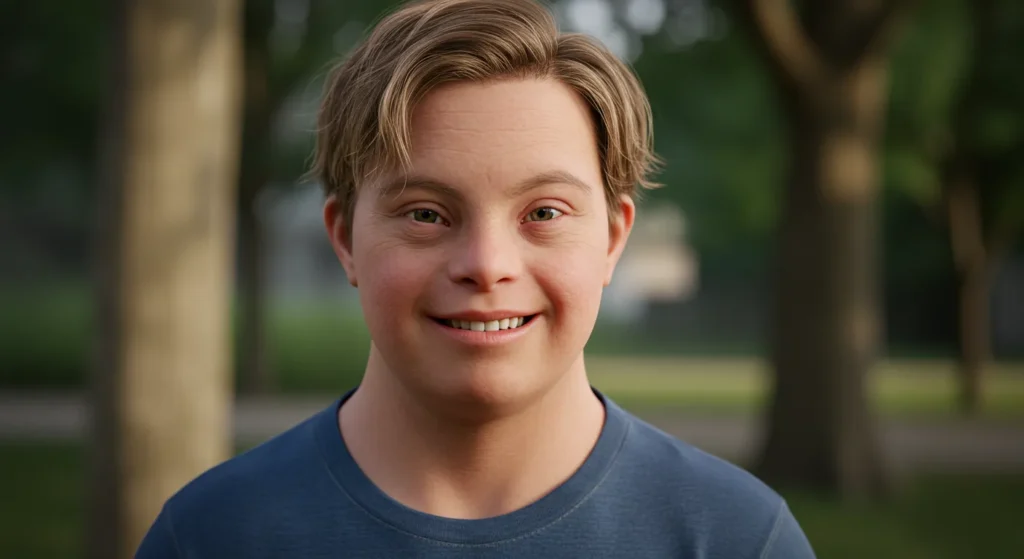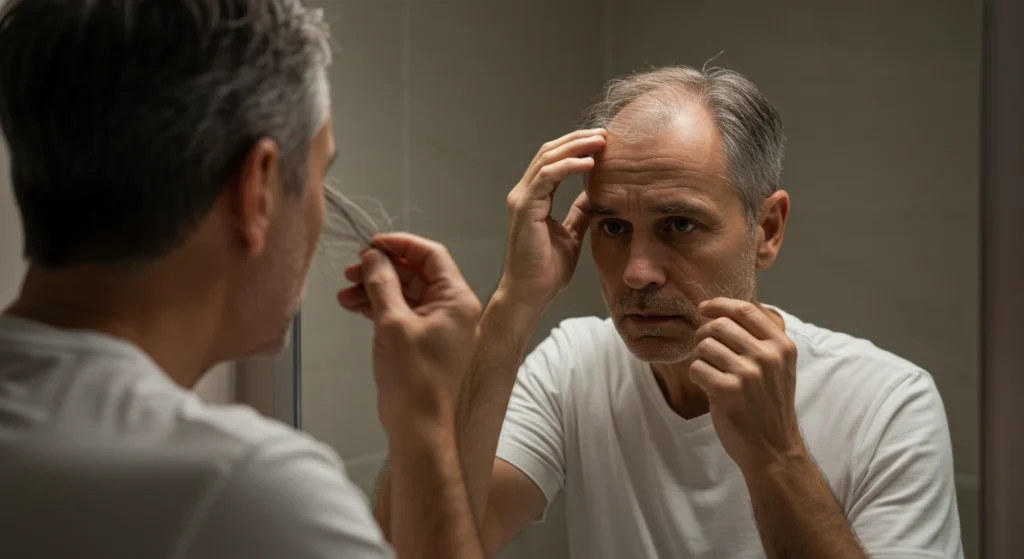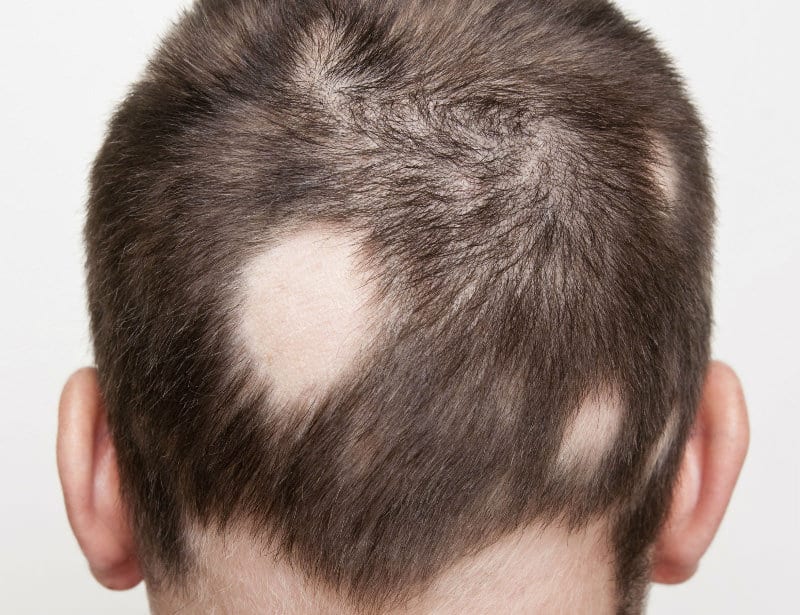Worried about hair loss in Down syndrome? You’re not alone. Many families are concerned when children or adults with Down syndrome start losing hair unexpectedly.
In this guide, we’ll explain why this happens, what treatments are available, and how to provide emotional and medical support. You’ll gain clarity, learn from real-life scenarios, and get actionable tips backed by trusted medical expertise—all to help you navigate this challenging yet manageable condition.
What Is Hair Loss in Down Syndrome?

Hair loss in individuals with Down syndrome is often linked to autoimmune conditions, with alopecia areata being the most common cause. This condition causes the immune system to mistakenly attack hair follicles, leading to patchy or total hair loss. While hair loss can affect anyone, studies show that people with Down syndrome are at a significantly higher risk.
Common terms you may come across include:
- Alopecia areata: Patchy bald spots on the scalp or body
- Alopecia totalis: Complete loss of scalp hair
- Alopecia universalis: Complete loss of body and scalp hair
These types of hair loss can be distressing but are often manageable with early intervention and supportive care.
Prevalence & Types of Hair Loss in Down Syndrome
How Common Is It?
Research indicates that individuals with Down syndrome are up to 10 times more likely to develop alopecia areata compared to the general population.
Estimated breakdown:
- Alopecia Areata (patchy): ~6–10%
- Alopecia Totalis/Universalis: ~2.5–4%
- Telogen or Anagen Effluvium (temporary shedding): Less common, often stress-related
Types of Hair Loss
- Patchy bald spots (most common)
- Complete scalp hair loss
- Loss of eyebrows/eyelashes
- Diffuse thinning
Why Does Hair Loss Occur in Down Syndrome?
Genetic Predisposition
People with Down syndrome have a third copy of chromosome 21. This extra genetic material can overexpress certain genes like MX1, which play a role in autoimmune regulation, leading to an increased risk of alopecia.
Autoimmune Activity
Down syndrome is associated with several autoimmune disorders, including:
- Hashimoto’s thyroiditis
- Type 1 diabetes
- Celiac disease
These conditions may act as triggers or co-occurring factors for hair loss.
Hormonal & Nutritional Factors
Thyroid dysfunction is especially common in Down syndrome and often contributes to hair thinning. Other possible causes include:
- Iron deficiency
- Vitamin D deficiency
- Zinc imbalance
Recognizing the Signs
Early recognition can help initiate treatment before hair loss becomes widespread.
Signs to look for:
- Sudden patchy hair loss on the scalp
- Eyebrow or eyelash loss
- Nail pitting (small dents on fingernails)
- No scarring or redness on the scalp
- Family history of autoimmune disorders

Diagnostic Approach
Getting an accurate diagnosis is key. Your healthcare provider may suggest:
Medical Evaluation
- Detailed history of onset and progression
- Physical exam of scalp, nails, and skin
Lab Tests
- Thyroid function test (TSH, T3, T4)
- Iron levels (ferritin)
- Vitamin D and zinc levels
- Autoimmune markers (e.g., ANA panel)
Scalp Biopsy
In unclear cases, a small sample of scalp tissue may be taken to confirm alopecia areata or rule out other conditions.
Treatment Options & Evidence-Based Results
Treatments vary depending on severity and patient age.
Topical Therapies
- Corticosteroids: Reduce inflammation
- Minoxidil (Rogaine): Stimulates hair regrowth
- Tacrolimus/Mometasone combo: Promising results in children with DS (60% regrowth in 4–6 months)
Systemic Treatments
- Oral steroids (short term): May reduce the immune attack
- Methotrexate, Cyclosporine: For severe or resistant cases
- JAK Inhibitors (e.g., Tofacitinib): New class showing remarkable success in some case reports
Pro Tip: Always discuss potential side effects with your child’s dermatologist before starting systemic treatments.
Supportive & Cosmetic Options
- Wig fitting and styling services
- Scarves, caps, or headwraps
- Scalp micropigmentation (in older individuals)
Recovery Timeline & Realistic Expectations
Hair regrowth depends on the severity, type of treatment, and how early therapy is started.
| Treatment | Visible Regrowth | Notes |
|---|---|---|
| Topical steroids | 8–12 weeks | Patchy regrowth |
| Combination therapy | 4–6 months | Up to 60–70% regrowth |
| JAK inhibitors | 3–6 months | Ongoing studies |
| No treatment | Unpredictable | May relapse or progress |
Emotional & Lifestyle Support
Hair loss, especially in children, can deeply affect self-esteem and emotional well-being.
How to Help:
- Offer unconditional support and validation
- Use age-appropriate explanations
- Talk to schools about supportive policies
- Engage in activities that build confidence
Professional Support
- Counseling or child psychologist referral
- Parent support groups
- Online communities (e.g., NAAF.org)

FAQs
Can hair grow back completely in Down syndrome-related alopecia?
Yes, especially in patchy alopecia areata. Success varies by treatment and individual response.
Is the hair loss permanent?
Not always. Some children may experience cycles of loss and regrowth.
Are JAK inhibitors safe for kids?
They show promise, but should only be used under close supervision due to potential side effects.
What triggers a relapse?
Stress, infections, or stopping treatment too early can lead to relapse.
Can diet or supplements help?
Correcting iron or vitamin D deficiencies can support recovery, but they’re not standalone cures.
When to Seek Professional Help
Consult a pediatric dermatologist if:
- Hair loss progresses quickly
- There’s eyebrow/eyelash involvement
- No regrowth after 3 months of treatment
- Associated autoimmune symptoms appear
What to prepare:
- Photos of progression
- Any recent blood tests
- Family history of autoimmune issues
Struggling with your child’s hair loss?
Get expert guidance tailored to Down syndrome-related alopecia.
Book a consultation with Dr. Rana Irfan, an ABHRS and ISHRS certified surgeon in Islamabad today for diagnosis, personalized treatment, and compassionate support that makes a difference.
